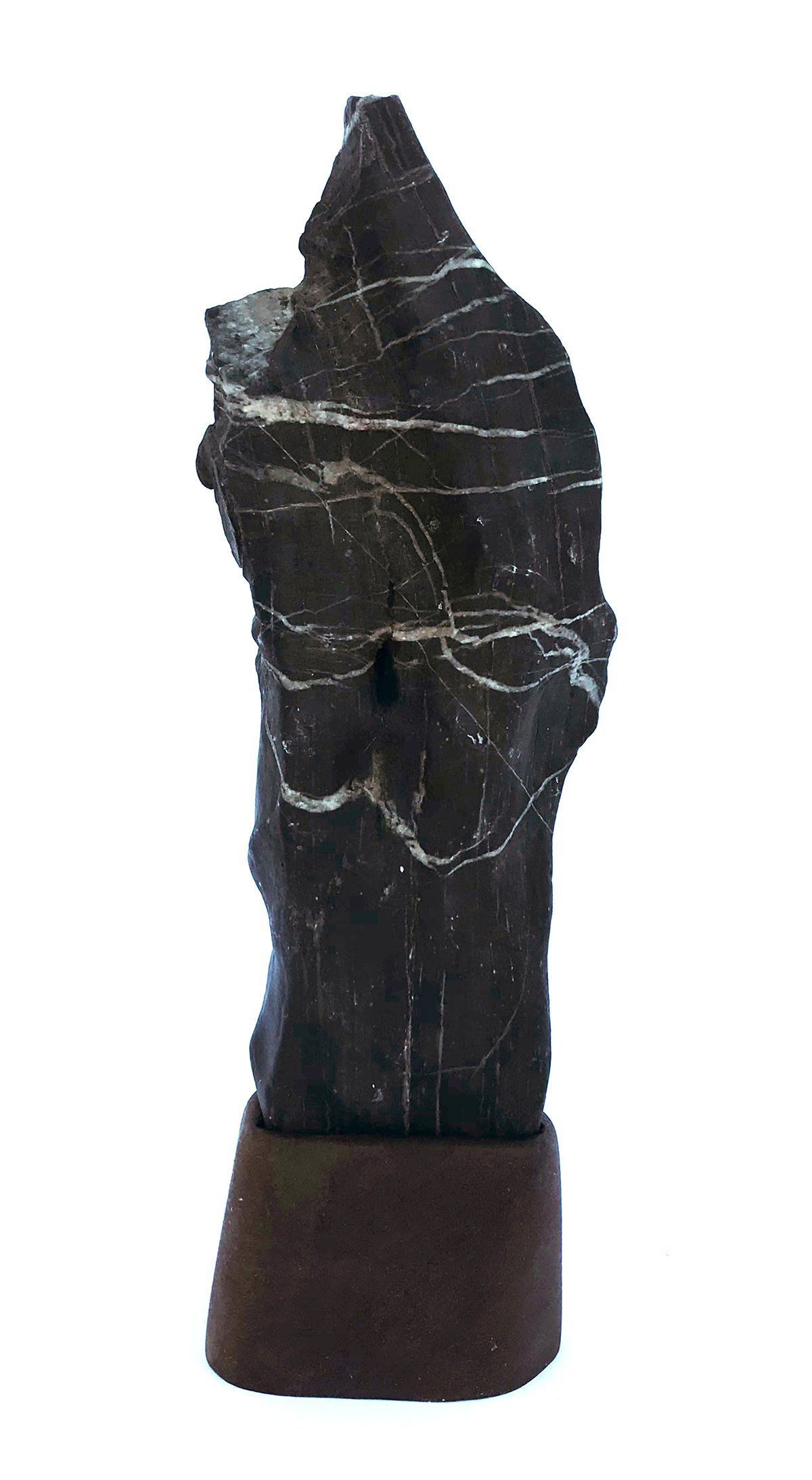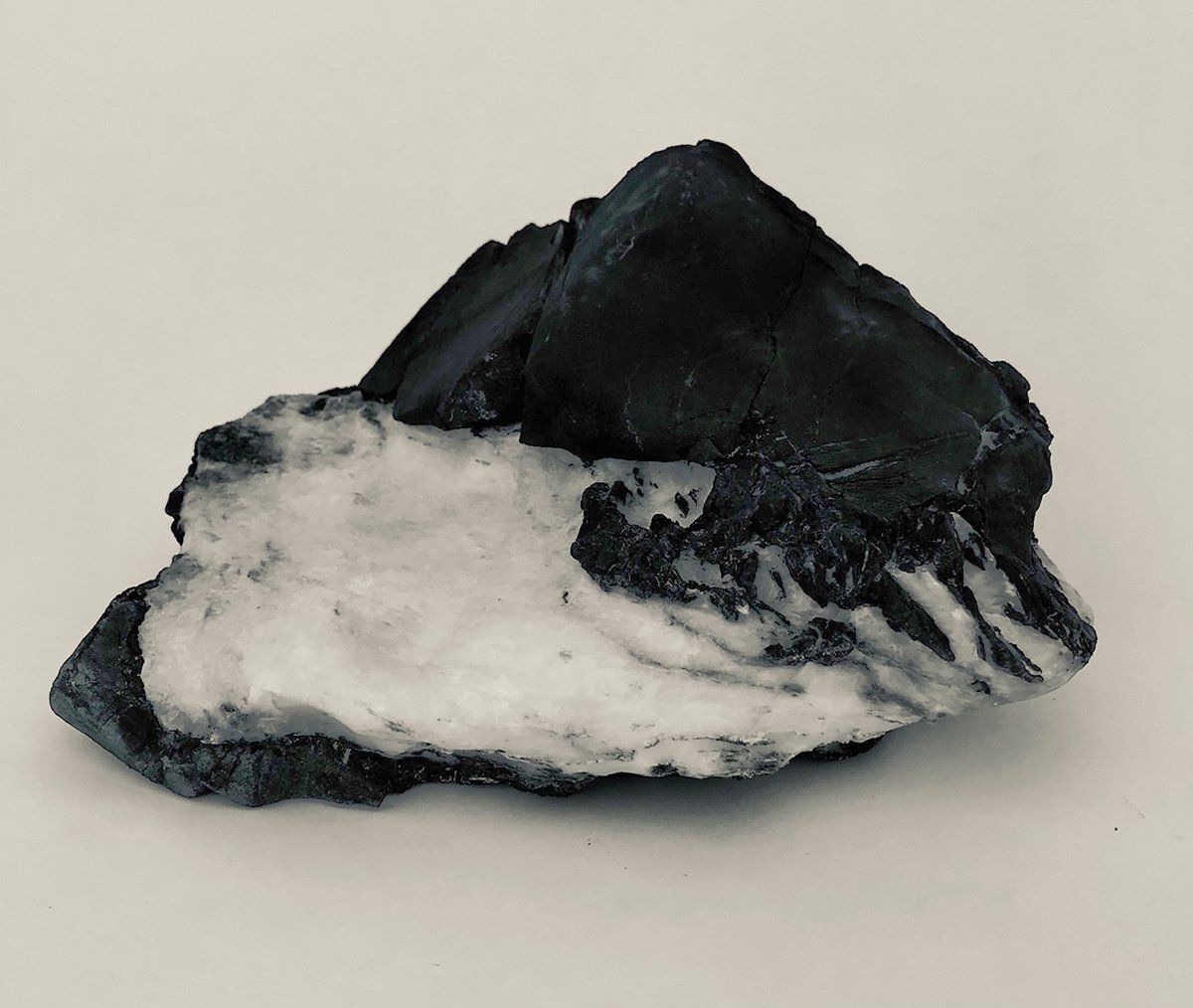Viewing Stones of Southeastern Alaska
An account of one man’s search for viewing stones along the Inland Passage in southeastern Alaska
By Thomas S. Elias, May, 2021. Photos courtesy of Gary McWilliams
The majority of the viewing stones we know today from Alaska originated from the beaches or rivers present along the Inside Passage, a network of waterways that weave through the many islands extending from the northern state of Washington, along the western coast of British Columbia, and extending to Skagway, Alaska. This passageway,
Passage Interieur, is protected from the often-turbulent open sea and used for centuries by native Indians, explorers, miners, and more recently by sightseeing cruises moving along the beautiful coastal Pacific Northwest. This article chronicles one man’s travels and adventures. Gary McWilliams collected minerals and rocks for over twenty years, and here we highlight some of the viewing stones he found in this region. Gary’s life is reminiscent of Jack London’s life, who a generation earlier quit his university education to travel to Alaska to search for gold and wrote extensively about his adventures in the state.
Gary McWilliams is returning to the Hyak in his smaller skiff with recently collected rocks.
McWilliams spent his boyhood days in rural North Carolina, where he developed a keen interest in rocks. He picked up rocks with intriguing shapes as a child, along with fossils, minerals, and related objects. Despite his life-long interest in rocks and minerals, he is glad that he did not become a professional geologist. As an amateur geologist, his curiosity could remain more of a love affair than a job. He left graduate school in 1971 to fulfill his dream of traveling worldwide. During this time, he worked in a mine in Colorado and continued to collect mineral specimens.
He sold his Colorado based mineral collection and moved to southeastern Alaska. He used the proceeds from the sale to purchase a 52-foot 1940s vintage wooden boat, the Hyak and operated it as a charter boat service out of Alaska in the Inland Passage. For twenty years beginning in 1979, McWilliams took foresters, commercial divers, fishery scientists, and geologists conducting geological surveys for the U.S. Government to numerous islands along the passageway. This time allowed McWilliams to learn more about this region’s geology and the opportunity to collect rocks and mineral specimens. He was living the dream life for any rock collector. Imagine being paid to go rock hunting! But collecting rocks along beaches in the Inland Passage is challenging due to two low and two high tides every 25 hours. Tidal fluctuations here are extreme. During this period, he assembled an enviable collection of viewing stones. He collected stones that spoke to him. Stones were selected based solely on their form or their suggestive nature.
McWilliams wrote in correspondence to me that “In Alaska, I collected stones of all types: crystals, fossils, lapidary stones, and marble for sculptors. Collecting viewing stones was different from all the others. It was as if some other part of my brain was then operative, the other shut down. My interest was certainly never pecuniary, as it might have been for lapidary stones or marble for sculpture.”
McWilliams searched the beaches and stream beds on the Prince of Wales and other islands in southeastern Alaska for his stones. Here are five from Beaver Creek, one of his favorite areas on Prince of Wales. McWilliams notes: "I could only walk this stream bottom when the resident beavers co-operated; intermittently, they had it inundated with the impounded water of their dams."
“Japanese Cranes" was collected Beaver Creek on Prince of Wales Island. This black and white marble is 27.9 x 17.8 x 10.2 cm (11 x 7 x 4 inches). The flying birds interpretation is comparable to similar Nantian stone found along the seashore and coastal waters in eastern Taiwan.
"Snowy Mountain with Stream" was also found along Beaver Creek. This landscape stone measures 22.8 x 17.8 x 12.7 cm (9 x 7 x 5 inches).
This rock, named "Swirls," illustrates the dynamic folding of rock layers under heat and pressure, and is another stone from Beaver Creek. It is 27.9 x 11.4 x 10.2 cm (11 x 4.5 x 4 inches).
The last stone from Beaver Creek is "Mountain with Snow Fields," a landscape stone with a steeply rising mountain at the back of an extensive snowfield. This rock is 22.9 x 17.8 x 12.7 cm (9 x 7 x 5 inches).
Fish Egg Island, a small uninhabited isle along the west coast of Prince of Wales Island, provided McWilliams with additional new types of viewing stones.
The layers of deposition in this stone named "Mesa Stone" tell part of the geological history of the Prince of Wales Island. This stone was found on Fish Egg Island, immediately to the west of the town of Craig on Prince of Wales. ”Mesa Stone” is 22.9 x 12.7 x 12.7 cm (9 x 5 x 5 inches).
An intriguing pattern stone from Fish Egg Island measures 14 x 7.6 x 3.8 cm (5.5 x 3 x 1.5 inches). McWilliams named this coarse-grained, metamorphosed sandstone "African Painting" because of the dark brown iron oxides in this rock.
McWilliams shifted his focus in 1999 and sold Hyak and opened a more sedentary business, Stone Arts of Alaska, in Craig, Alaska where he sold minerals, natural sculpture stones, and began carving, basins, and sculpture from stones. These objects were a vast accumulation of stones he collected while operating his boat in the Inland Passage. Gary collected all the rocks he sold rather than buying stone from other collectors. The website, www.stoneartsofalaska.com, is still available, although it was last updated on January 12, 2012. Gary and his partner Karen Healy closed the Craig, Alaska, shop and moved to Bellingham, Washington, where they continued to produce stone art. Then, Karen and Gary moved to Silver City, New Mexico, and opened Under the Pine Tree Stone studio, where the couple carries on their stone art creations, only now, using local New Mexico stones. Now, having left the Pacific Northwest for New Mexico, McWilliams wants to sell his entire Alaska collection, all 130 stones as a unit, so he can focus solely on stones from his new New Mexico home. Most of his natural sculptures do not have bases, but that fits someone more interested in collecting extraordinary rocks than displaying them.
Gary McWilliams has published three books relating to his days in southeastern Alaska and his wander lusting days as he traveled worldwide. The Anchor and Pick (2017, first printing) chronicles his stone collecting activities in Alaska’s Inland Passage upper part, and describes each of his collecting sites. His second book, Wanderlusting, was published in 2014, although an earlier edition appeared in 2008 under the title Hot Coffee and Poached Goose. This volume is a series of stories from his global wanderings. His third book, The Mayor of Mucklerat (2020), is a continuation of a series of stories from his youth to later years. These books are available for purchase at underthepinetreepublishing@gmail.com.
Gary has led a remarkable life, one that fulfilled his childhood dreams of wandering the globe and pursuing his interest in stones and minerals. He contracted the non-lethal "rockpox" virus early in life and continues to impact his stone collecting.
This figure stone, named "Eskimo Girl," is a conglomerate stone found on a beach on Tuxekan Island, Alaska. It is 35.5 x 25.4 x 15.2 cm (14 x 10 x 6 inches).
McWilliams named this large marble figure stone "Nessy." This stone is 71.1 x 17.8 x 29.9 cm (28 x 7 x 11 inches) and was collected on Dall Island.
"Cyclops," with its darker stone eye embedded in the larger dull reddish-brown stone can be interpreted as an abstract stone. It is from Kuiu Island and measures 38 x 30 x 20.3 cm (15 x 12 x 8 inches).
"Wavy Rock," found on an unnamed island in the Grand Island group, is a large sedimentary stone that measures 61 x 22.9 x 22.9 cm (24 x 9 x 9 inches). The wavy feature was likely caused by water steadily lapping over this stone.



